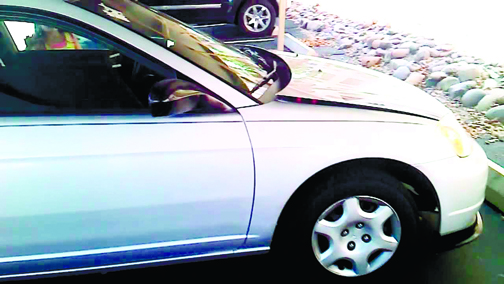Of high temps and raised hoods
 Atty. Jerome G. Neri
Atty. Jerome G. Neri
The Scrutineer
TOYOTA VIOS TAXIS. A lot of them are running with the hood slightly open. Some taxi drivers claim that the car has an engine temperature problem, and the solution — without changing to a bigger radiator — is to pop the hood slightly open.
I have friends who have the same car and not once did they have or complain about a temperature problem, nor have I seen any private Toyota Vios with the hood slightly open due to a temperature issue.
Assuming that for taxi use the Toyota Vios engine temperature runs on the hotter side, popping the hood slightly is the wrong solution, and the taxi operators should stop their drivers from doing it.
By popping the hood a bit, there is a risk that the hood will open at higher speeds from about 60 km/h or faster. That is very dangerous. Moreover, running a taxi with a slightly popped hood makes the car look ugly.
There is a better and safer do-it-yourself way to reduce engine temps that cost almost nothing. The solution is hood spacers. Installing washers at the mounting points of the hood – thereby raising the rear part of the hood – lets more hot air escape from the engine compartment, lessening the heat soak and resulting in cooler engine temps.
This is what the taxi drivers or operators should do if their taxis have temperature problems. In fact the cooling effect this would bring will even be more effective than slightly popping the hood.
DIESEL TUNING CHIPS. There are many diesel tuning chips out in the market today that claim to boost power and economy. Two types are commonly marketed here in Cebu. I would classify them as the Throttle position sensor chip and the common rail pressure increaser chip. Both types claim an increase in power and economy. Their claims are not completely true.
The throttle position sensor chip is the one that is plugged to the wiring harness of your accelerator pedal. This chip does not actually increase power but may help in fuel economy, if you have a heavy right foot.
Usually this chip has three settings: power, normal, and economy.
In the power setting, when you press the accelerator pedal to, let’s say, 50 percent, the chip intercepts the signal and tells the engine management system that your pedal is depressed 100 percent and thus the engine management system tells the engine to go full throttle even if your accelerator pedal is only pressed halfway. You have a sensation of an increase in power when in fact there is none.
Normal mode is normal, so 50 percent pressure on the accelerator pedal will be equal to 50 percent throttle.
The Economy mode is the opposite of power mode, so when pressing the accelerator pedal to 50 percent, the engine management system will see it only as 25 percent and tell the engine to give only 25 percent throttle. With this, a person who has a heavy right foot will definitely see better fuel mileage.
All the benefits of the throttle position chip can be accomplished by the proper use of your right foot. Personally, this is a product I will not buy.
On the other hand, the common rail pressure increaser chip is one that is plugged in to the fuel pressure sensor in your fuel rail.
What this chip does is it takes the fuel pressure reading in your fuel rail and sends a lower fuel pressure reading to your engine management system. Your engine management system will then increase fuel pressure, thereby increasing fuel delivery to your engine. The result is a lot more power and even a lot more torque. Horsepower is increased by as high as 30hp, while torque is increased by as high a 50 lb/ft. It does the job of increasing power very well.
However, increasing fuel pressure means more fuel is being injected to the engine, so there is no benefit in terms of fuel economy.
The manufacturers of these chips base their claim of fuel economy by arguing that because of the added power, one does not press on the accelerator pedal as much. In short, you will have better fuel mileage if you change your driving habits by having a lighter foot. The chip has nothing to do with the economy — it is the foot.
What turns me off with this kind of chip is the way it is marketed, because this is not really a computer chip or processor that alters the map of the engine management system. It is just a digital resistor, and the adjustments increase or decrease resistance, so this device that ought to be relatively cheap.
However, some brands are sold as high as P45,000 and some as low as P18,000. If I were to buy one, I’d get the cheapest, as I am certain the results between the pricey one and the cheaper one will be the same.




